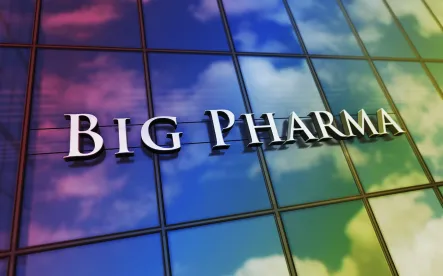HHS-OIG declined to impose administrative sanctions on drug manufacturer for providing financial assistance to beneficiaries in specific and limited circumstances
HHS-OIG highlighted the FDA limitation on administering the drug to a single site as reducing the likelihood that financial assistance will induce beneficiaries to use a specific provider
The drug’s status as the only curative treatment for the severely immunocompromised population reduces the risk that the assistance creates risk under the Anti-Kickback Statute
On Feb. 23, 2023, the Office of Inspector General of the U.S. Department of Health and Human Services (HHS-OIG) issued Advisory Opinion No. 23-01 regarding sanctions against a drug manufacturer for providing transportation, lodging and meals assistance to needy pediatric patients and their caregivers in connection with using the manufacturer’s drug.
Despite potential implications under the federal Anti-Kickback Statute (AKS) and the beneficiary inducement civil monetary penalty rules, HHS-OIG determined that the unique circumstances involved with the manufacturer’s drug, including the small size of the patient population and its extreme needs, reduced these concerns and did not impose administrative sanctions.
The manufacturer’s drug is a one-time potentially curative treatment; it is the only treatment available to reconstitute the patient’s immune system. The condition is extraordinarily rare – it affects approximately 17 to 24 out of every 4 million children born each year in the United States. It causes severe combined immunodeficiency, resulting in prolonged hospitalization, frequent outpatient visits, home healthcare, and significant testing, medications and procedures.
The name of the manufacturer and its drug formulary were not disclosed during the request for an advisory opinion process or in the opinion itself.
Due to the constraints of U.S. Food and Drug Administration (FDA) approval, the drug may only be manufactured at a single facility, which is located on the treatment center campus. The drug has an incredibly short shelf life of only three hours. Thus, patients must travel to where the treatment center is located. Patients often arrive in the treatment center area five to 11 days prior to the implantation of the drug in order to go through testing, clinical evaluations and immunosuppressive therapy if necessary. Patients will typically remain at the treatment center for up to a week after the drug implantation.
Because of how long patients must be close to the treatment center and the long distances that the severely immunocompromised patients must travel, the manufacturer offers assistance to patients and their caregiver(s), including: medical travel; modest lodging, when charitable housing is unavailable; and coverage for caregivers’ out-of-pocket expenses up to a certain amount per day.
Patients must also meet eligibility criteria, including household income and geographic limits, to receive assistance. If insurance covers any of the items related to travel, then there cannot be duplicate assistance.
The advisory opinion also noted the nature of both the condition and the drug reduces any risk of interference with clinical decision-making, overutilization or inappropriate utilization.
The drug is not mass-produced and the condition is identified through nationally required newborn screening. Because the number of children diagnosed with the condition each year is so few, it would be incredibly rare for a doctor practicing at the treatment center to be the physician diagnosing the patient and prescribing the drug.
In addition, the agency determined the arrangement is unlikely to increase costs inappropriately to federal healthcare programs. HHS-OIG recognized that without the drug, patients have high healthcare needs with an associated economic burden of over $5.5 million in the first three years of life. Thus, accessing the drug may actually decrease overall healthcare costs.
Key Takeaways
The majority of HHS-OIG’s advisory opinion focused on the unique circumstances given the limited treatment options. In particular, HHS-OIG recognized that due to patients’ lack of choice in curative treatments and limiting FDA approvals, the financial assistance offered to patients was unlikely to induce patients to use the drug or use a specific provider. Rather, HHS-OIG acknowledged that where the financial assistance is designed to aid a small and medically needy population, it is more likely to be permissible under either the AKS or the Beneficiary Inducement CMP.
However, HHS-OIG’s conclusion also explicitly relied on the representation that the financial assistance costs were not being passed on to federal health care programs by being accounted for in the cost of the drug. That critical representation, in conjunction with the noble effort to ease access to the treatment for the small population affected, is likely what resulted in OIG’s determination that the arrangement is not grounds to impose sanctions.




 />i
/>i

